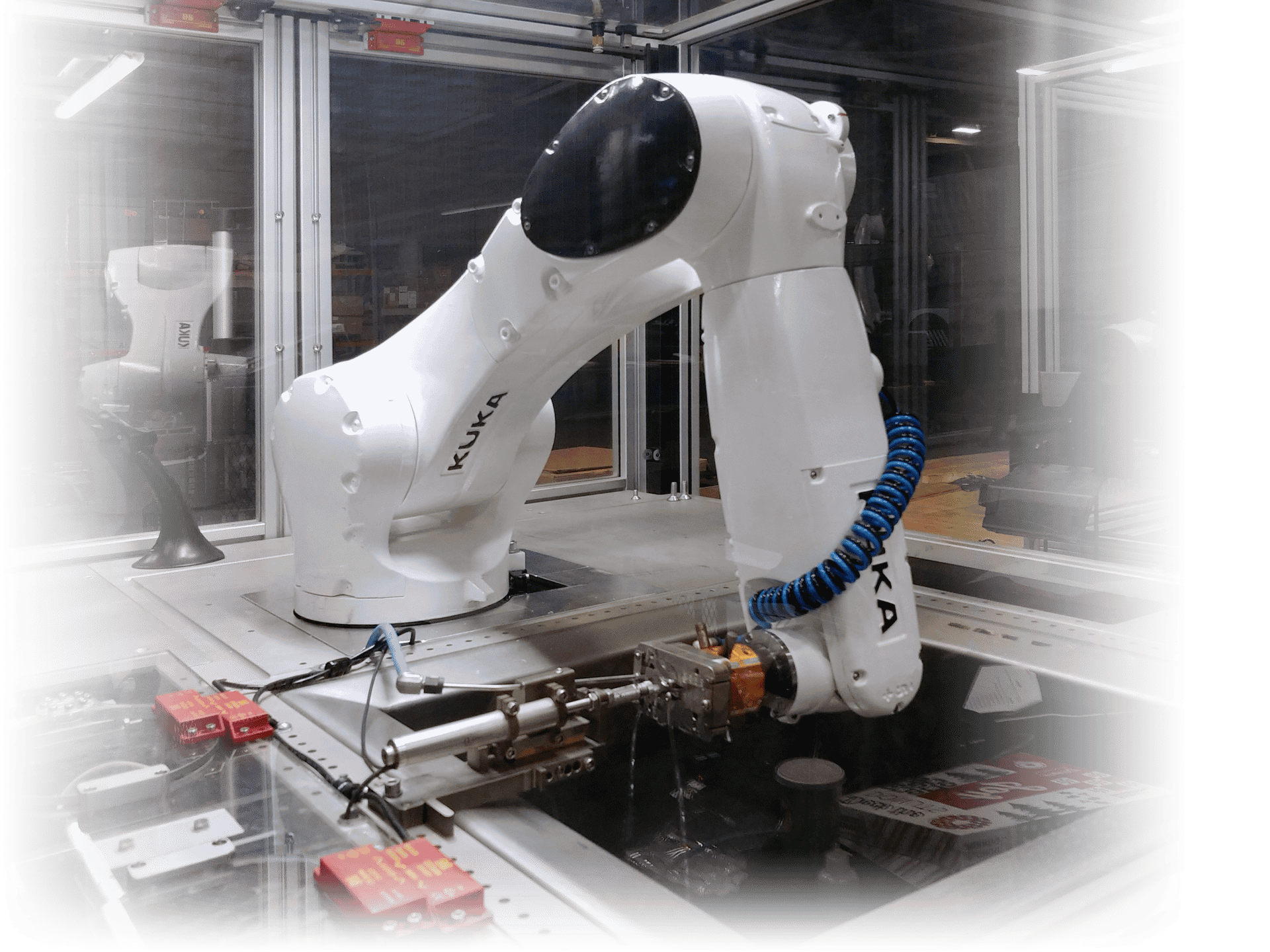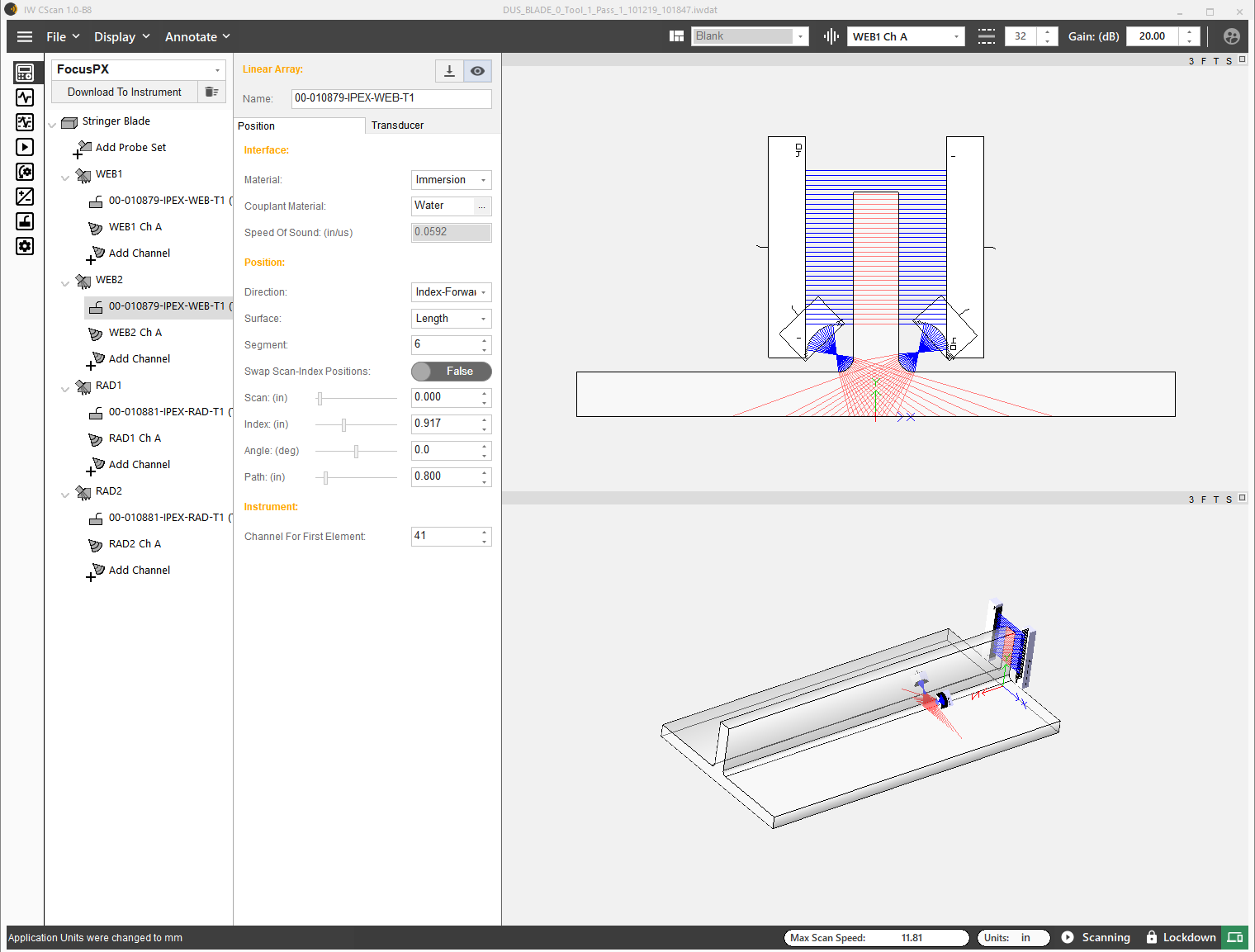Robotics

These machines are only gaining favor post pandemic. By Genevieve Diesing
Automated robotics
are just getting started
Robotics
Automated robotics are the best way to mimic a human in a factory environment, experts say. A robot’s automated camera could replace a person’s eyes, a PC would represent the brain and robotic arms are movement — like “a human replacement that doesn’t get tired or moody,” says Adrian Ng, senior sales, Cortex Robotics Sdn Bhd.
“We tend to use a broad definition of automated robotics in the nondestructive evaluation (NDE) community, because the range of applications for automation is itself quite broad,” says Dave Seto, director of business development, UTEX Scientific.
For in-service inspections, organizations such as UTEX deploy “every conceivable type of mobile robot, such as wheeled or tracked crawlers, articulating arms (snakes), drone helicopters and so on,” Seto says. “Even robotic ‘dogs’ like those from Boston Dynamics are making their entrance onto the scene.”
Mobile systems are primarily used to avoid the difficulties of direct human access in hazardous locations, which boosts safety, he adds. Because robots can enter an enclosed space or vessel without disassembly, and without the same level of stringent safety protocols that a human would require if a technician had to go into that same space, this technology often reduces cost, he says.
Successful Automation and NDT
Dave Seto, director of business development, UTEX Scientific, explains what quality professionals need to know about automation, how NDT can play a role, and the ecosystems involved in the process.

Automated robotics “is simply part of the overall automation solution,” says Chris Mickey, vice president, mechanical engineering, Edmunds Gages.
“The total solution could include a servo-controlled gantry axis to allow greater reach for the robot, various end effectors and even automatic end effector changers, machine/robot vision, conveyors and other material handing solutions such as AGVs,” he says. “In the end it’s a definition of the system goals and developing a solution to achieve those goals on time and on budget.”

How does automation impact quality?
Robotic automation eliminates human error, Mickey says. “Whatever that error is, robotic automation will tend to be more consistent than human interaction,” he explains.
Humans can be unpredictable, but a machine won’t be, says Ng. “If we take out those causes from a production/manufacturing line, we have a much better chance to produce stuff in a more repeatable way,” he says. “Additionally, automation in quality control would definitely be a good gatekeeper to make sure the machines are working according to expectations.”
In NDE, robots enable quality assurance testing to keep pace with manufacturing, usually requiring 100% testing of every component, with part number or lot number batch level identification with time stamps, Seto says.
As components become increasingly complex and numerous, humans struggle to keep up.
“We are also bad at repetitive movements with high repeatability and precision,” Seto says. “Add to this, the downward trend in recruiting. Like many skilled trades, nondestructive testing is experiencing a reduction from the retirement of expert workers, while young people are reluctant to enter the trade. Using robots is one way to improve the quality of the inspection process, while keeping pace.”

Evolving technology
Automated robotics are changing with the times. Operators are seeing reduced costs and better programming tools, as well as more robots on the factory floor, doing more tasks.
“Collaborative robots, advances in safety mats, and dual check safety have all brought the automation and the users closer together,” Mickey says. “There are also more advanced vision tools and sensors, which are more easily integrated within the robot controllers these days. Lastly, there are more advanced simulation tools that allow you to model the intended motions and conduct time studies while in the design stage, ensuring the final automation system meets its objectives.”
Standardization and communication interoperability has also improved.
“This is very helpful to niche companies like us, because investing time and people into developing expertise for several automation platforms is cost prohibitive,” Seto says.
Mickey has noticed robots being used for machine tending, both loading and unloading/palletizing.
“Many cells might simply have an operator provide a cart full of parts, and a second empty cart,” he says. “The robotic system will pull product from the supply cart, load and unload the machine tool, present the machined part to various secondary systems, and then pack the part on the previously empty unload cart,” he says. Between the robotic automation and the tool changer within the CNC, “you have a pretty much ‘lights out’ operation,” he explains.
Seto is noticing an increasing amount of robots mounted on mobile platforms, especially in aerospace manufacturing. For large aircraft fuselage, and similar structures, it is often easier and less expensive to bring the inspection robot to the component, versus moving a large, delicate structure into a dedicated inspection cell, and then back out again for the next stage of assembly or integration, he says.

A growing sector
Robotics automation will only grow moving forward, according to Ng.
The pandemic might have accelerated this growth. Before 2020, “human inconsistency was always the key driving factor in every industry’s automation initiative,” Ng says. “Then the pandemic came and made everyone realize that automation is a necessity as machines do not get sick and are able to work continuously without the need to rest. In short, the pandemic has taken the automation industry to a rocket level.”
Mickey agrees, citing International Federation of Robotics data that says industry sales fell from a peak in 2018 in both 2019 and 2020.
“The year 2021 saw a rebound, and I would expect more of a rebound in 2022,” he says. “Post-pandemic, many businesses have struggled to find employees. I think the increased use of robotics had helped many businesses solve this personnel/staffing problem.”
Seto says his industry is still recovering from pandemic-induced disruption to the electronics supply chain.
“We continue to struggle to obtain instrument boards,” he says. “Some manufacturers are doing better than others because they are smaller and produce in batches, rather than continuous just-in-time process. Their inventory of unfinished electronics gave them some resilience.”
Robot controllers, however, have shorter lead times and lower costs than stand-alone PLCs, which are used for Cartesian gantry machines.
“Some clients have reported to us that they are switching from Cartesian gantry machines to articulated robots, because they cannot obtain the PLCs they used for Cartesian machines,” Seto says. “These systems builders are now are investing in learning new technology and new ways of working, and importantly, they are giving up some speed and precision, just so that they can deliver inspection systems.”
